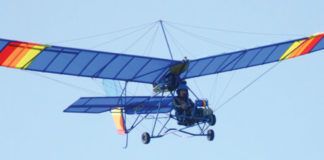
Question: I have assembled a Lycoming O-235 engine, which does not have a data plate. The crankcase is identified with a serial number, which does match the engine logbook. How do I identify this engine and must this data be affixed to the engine?
Answer: If the data plate has been removed from your engine, it is likely because someone has modified the engine so that it no longer meets Lycoming’s type design. If the engine is installed in an Experimental aircraft, it does not have to have a data plate. As a matter of fact, if the engine has indeed been modified, then Lycoming does not want their data plate on it.
Question: Is the date of manufacture required on the data plate of an Experimental aircraft?
Answer: No, the only information required on the data plate is make (builder), model (as shown on the registration), and serial number (again as shown on the registration). The date of manufacture is not required. If you want to put this information on the data plate, you may. The official date of manufacture is the date the airworthiness certificate is issued. Many people just put the month and year. However, you may put whatever you want.
Question: A friend recently purchased an already flying Van’s RV-8. In the following months as he was reviewing the aircraft documentation in more detail, he noticed a typo on the airworthiness certificate: The N-number’s last digit was incorrect and the airworthiness certificate does not match the registration certificate and FAA records. Who should he contact to correct the airworthiness certificate? Will the aircraft be grounded until the revised airworthiness certificate is received?
Answer: This is not all that uncommon. And there’s no need to ground the aircraft. Any FSDO or a DAR with function codes 46 and 33 can issue a replacement airworthiness certificate. Of course, the FSDO will do it free of charge, whereas a DAR will probably charge a small fee. Be sure to check the operating limitations for correct information while you’re at it.
Question: I am working on an older RV-6A kit and see that Van’s Aircraft has put out Service Bulletin 14-01-31 for the horizontal stabilizer spar. It states that annual inspections must be performed to look for cracks. If no crack is found, the SB is complied with and the horizontal stabilizer should be inspected annually as part of the condition inspection. If a crack is found, there is an invasive procedure for repairs. My question is this: In order to get my airworthiness certificate, must I complete the invasive repair, or can I plan to inspect annually? In comments I’ve read online, about 80% of the RVs affected by this SB are not showing signs of cracks and are being inspected annually.
Answer: There is no need to install the repair on a newly built aircraft. You may comply with the service bulletin by way of inspection annually. Just as an FYI, on every aircraft where I have found cracks, it was also found that the spar had not been properly deburred. I have inspected many aircraft that have been flying for years without cracks. My personal RV-6 has been flying since early 1993 and has no cracks.
Please send your questions for DAR Asberry to [email protected] with “Ask the DAR” in the subject line.










Hi
I was disapproved in my PPL checkride because my aircraft (C-152) was not having a fire proof data plate.
My DPE asked me that is the aircraft legal to fly?
I said yes considering the ARROW checklist.
and then he disapproved me
Was he right?
Was that Aircraft literally illegal to fly?